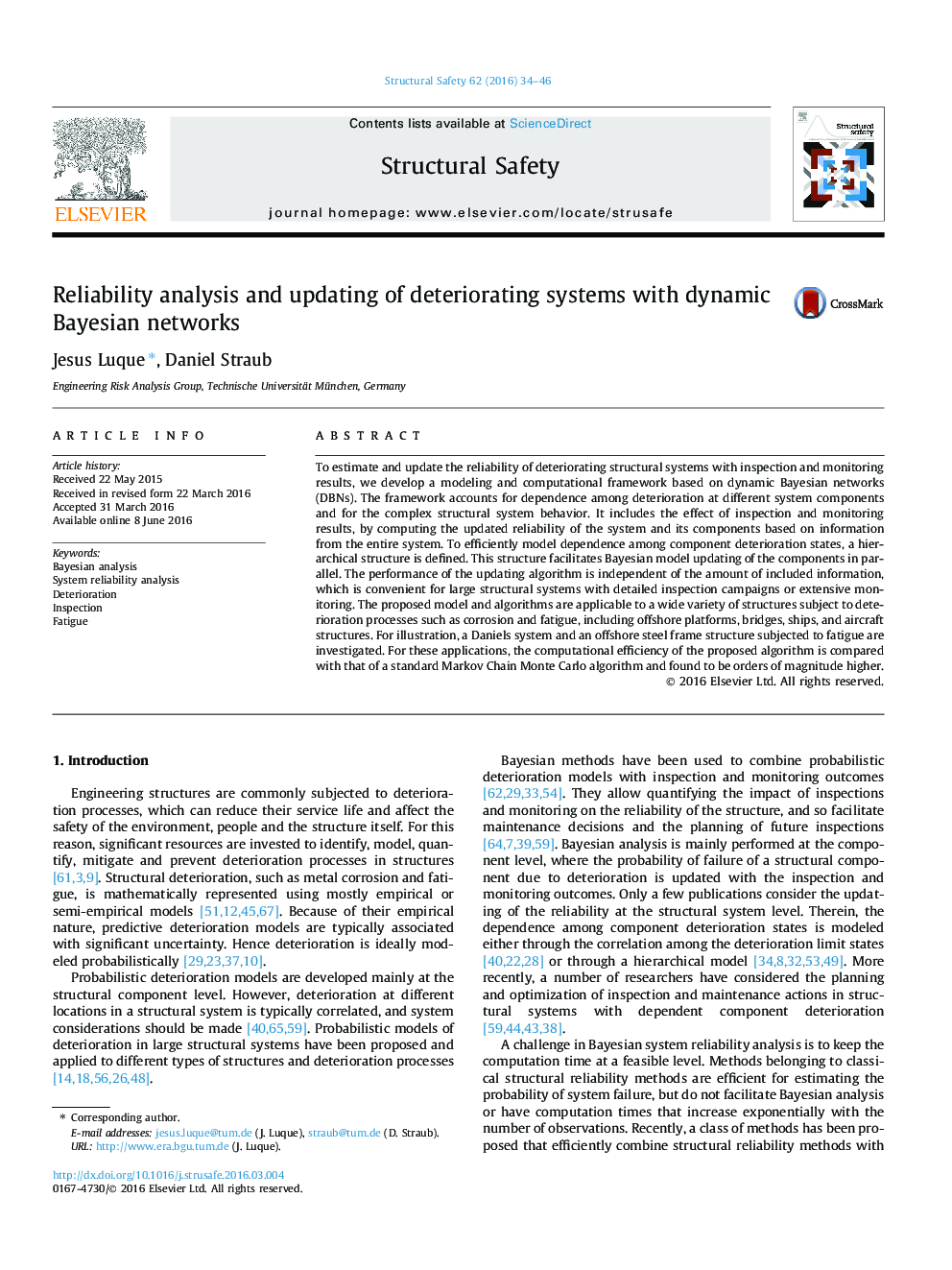| Article ID | Journal | Published Year | Pages | File Type |
|---|---|---|---|---|
| 307432 | Structural Safety | 2016 | 13 Pages |
•We use dynamic Bayesian networks to model the deterioration of structural systems.•We provide an accurate and efficient algorithm to perform Bayesian updating.•Reliability of a Daniels system and a steel offshore structure are accurately assessed.•Estimations are readily updated given multiple inspection and monitoring outcomes.•The proposed algorithm is orders of magnitude faster than other standard methods.
To estimate and update the reliability of deteriorating structural systems with inspection and monitoring results, we develop a modeling and computational framework based on dynamic Bayesian networks (DBNs). The framework accounts for dependence among deterioration at different system components and for the complex structural system behavior. It includes the effect of inspection and monitoring results, by computing the updated reliability of the system and its components based on information from the entire system. To efficiently model dependence among component deterioration states, a hierarchical structure is defined. This structure facilitates Bayesian model updating of the components in parallel. The performance of the updating algorithm is independent of the amount of included information, which is convenient for large structural systems with detailed inspection campaigns or extensive monitoring. The proposed model and algorithms are applicable to a wide variety of structures subject to deterioration processes such as corrosion and fatigue, including offshore platforms, bridges, ships, and aircraft structures. For illustration, a Daniels system and an offshore steel frame structure subjected to fatigue are investigated. For these applications, the computational efficiency of the proposed algorithm is compared with that of a standard Markov Chain Monte Carlo algorithm and found to be orders of magnitude higher.
